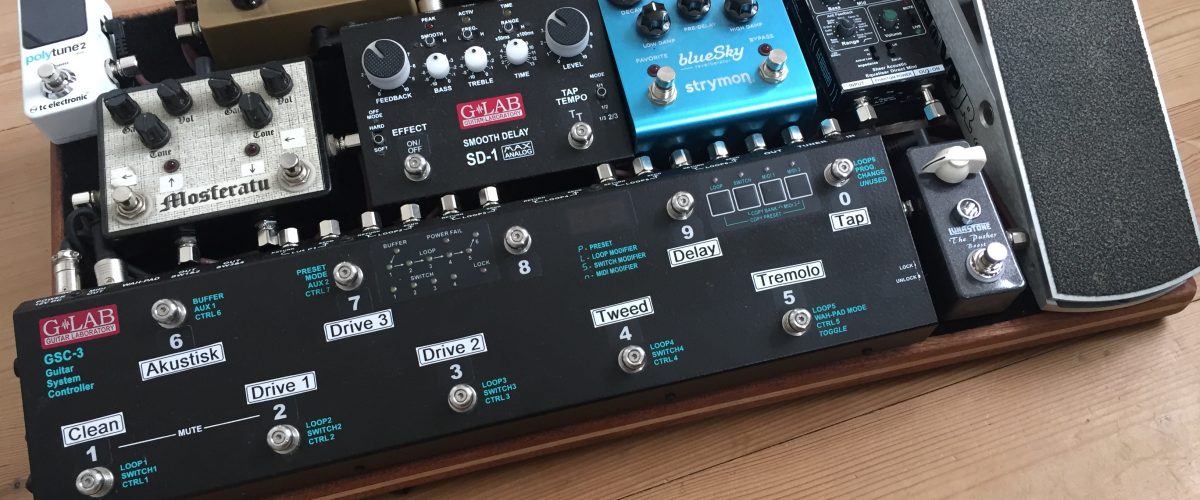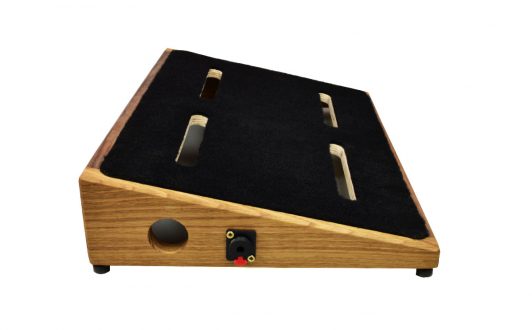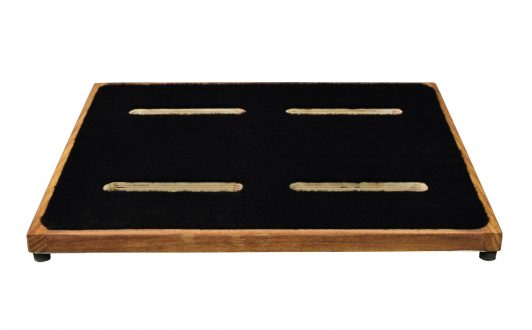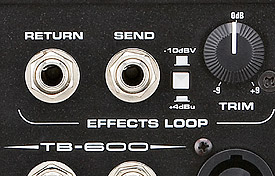Making Pedalboards Easy!
14th August 2017

Setting up your perfect pedalboard takes some planning, time and budgeting but when it’s finished you will have a world of tones at your feet. Here are some things to consider making sure you get the desired results without going over budget!
Choosing The Right Board To Build On
There is a few different types of pedalboards available with unique features that may appeal to you more than others. The first thing to consider is size; if you are only planning on using a small amount of pedals there is no point buying something that is too big for its purpose or if you plan on having a lot of pedals buy a pedalboard that will fit them all.
Some pedalboards feature locking input and output jacks which are great for securing your instrument cables in place so nothing comes loose mid solo! Ruach offers solderless locking jacks on all pedalboards from size 2.5 upwards so all you need to do is plug your instrument or amp in one end and a patch cable connected to your effects pedals to the other end.


Laying Out Your Pedals
There are no set in stone rules when it comes to laying out the effects on your pedalboard. There is however a template which is generally followed for less hisses, hums and unwanted sounds.
Tuner>>Dynamics>>Pitch>> Gain>> Modulation>> Time>> Volume/ Noise Suppression>> Loop
Tuner: needs the cleanest signal from the guitar to give the most accurate readings.
Dynamics: Includes compressors, wahs and volume control. Having the volume control at the start leaves delay tails unaffected later in the signal path.
Pitch: Again needs a clean signal for the most accurate results.
Gain: Distortions, overdrives, fuzz pedals and any amp in a box style pedal can be classed as gain and having these before delays and reverbs make for a less muddy signal.
Modulation: Chorus, flanger, tremolo and phaser are the most popular modulation pedals but this can also include some of the stranger and lesser used effects like organ or piano simulators.
Time: Giving delays and reverbs access to all other previous pedals will make sure tails and repeats are as clear as possible.
Volume/ Noise Suppression: Although these were mentioned at the start of the signal chain, it may also be desirable to cut off the signal entirely; this is done by adding kill switches at the end of the signal path. It’s still hard to cut out all noises made by pedals and grounding issues but a noise suppressor at the end of the signal chain can clean up nicely.
Loop Pedals: The phrases you record will remain unaffected if you turn on or off pedals that have been placed before. Loop pedals are perfect at the end of the chain to give the truest representation of what you heard as you were playing.
Effects Loops
Some amplifiers have built in effects loops which can be very useful if you use the amps built in drive channel. The amplifier effects loop can be in series or parallel; If it is in series, the entire signal from the amps preamp will be sent through the connected effects; if it is parallel, half the preamp signal will be passed through the effects allowing you to have a wet and dry mix (I.e. the unaffected amp tone and the tone after the pedals will be heard)

Effects Switching Units
Using an effects switcher can be a great way to stop you having to tap dance on your board to turn on and off multiple pedals between songs. Maybe you play guitars with different pickup configurations and have to adjust your pedals or even use different ones; a switcher makes this much easier. There are a few different options for effects pedal switching units but a special shout out goes out to Mooer and Boss. Mooer has a lot to offer in their low cost ‘pedal controller loop 6’ allowing 6 looping options at a fraction of the price of its competition. Boss however has taken the effects pedal market by storm recently with their ‘MS-3’ which doubles up as an impressive multi effects unit! Both options eliminate the need for a tuner pedal as they have great ones built in and you can adjust your tone with minimal effort.





